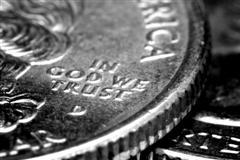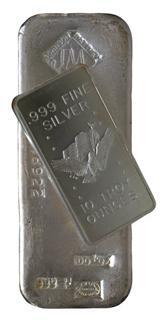| Home | About | Archives | RSS Feed |

The Independent Investor: The Business of Beauty
 Don't go trying some new fashion Don't go trying some new fashionDon't change the color of your hair ... I could not love you any better I love you just the way you are.  |
| — Billy Joel |
It is a "recession-proof" business with new openings forecasted to grow by 20 percent between now and 2018. Although these professions require state certification and courses in biology, chemistry, nutrition and herbology, hairdressing, hairstylists and cosmetologists can hardly fill the demand for their services.
The beauty of hair is that it grows; in fact, it is the fastest-growing tissue in the human body. The average human scalp harbors over 100,000 strands, which, if treated kindly, can have a lifespan of five and one half years. And today's female baby boomers are visiting salons at an increasing rate in order to preserve and enhance one of women's most alluring qualities. The nation's hairdressers are working overtime to accommodate these millions of women who keep coming back for a variety of services ranging from washing, shampooing, cutting, coloring and styling their hair.
 Women spend well over $50 billion a year at the salon. That's in addition to the billions they are spending on shampoo, conditioners, hairsprays, gels, mousses and hair coloring. And there is evidence that women actually spend more in a recession since it helps make one feel better about themselves in the face of economic uncertainty.
Women spend well over $50 billion a year at the salon. That's in addition to the billions they are spending on shampoo, conditioners, hairsprays, gels, mousses and hair coloring. And there is evidence that women actually spend more in a recession since it helps make one feel better about themselves in the face of economic uncertainty.
"Even though the economy is not doing so well, my business is just fine," reports Theresa Smith, the owner of Sheffield's Mystique Salon for the last 20 years.
Hairdressing dates back to at least the 1700s when the ladies (and men) of the French Court of Louis XV vied to present the most dramatic appearance possible at balls and other state functions. Powders, pastes, baskets, buns, and even live birds and cascading waterfalls were part of the daily parade of excesses. In this country, hairdressers created the "bob" in the roaring Twenties, the “beehive” during the “Mad Men” years of the 1960s and a long series of television-inspired dos inspired by everyone from Jennifer Aniston to Farrah Fawcett.
"Back in 1983 when I got started," recalls Tracy Wilson, soon to be owner of Indulgence Hair Salon in Pittsfield, "it was all about big hair, big hair spray and scary chemicals. Things have changed, and for the better."
There are a little over 800,000 barbers, cosmetologists and other personal appearance workers in America and about 44 percent of them are self–employed. But cutting, coloring, styling, curling, straightening, giving scalp treatments and massages is hard work. Many in the business, especially those who own their own salon, put in more than a 40-hour week, which can include evenings and weekends. Many hairdressers (29 part time) are part time and many of those work two jobs.
It's a business where the newcomer must pay their dues.
"Here in Massachusetts, the state requires 1,000 hours of practical work in addition to your course studies and once you pass the exam you're licensed as an apprentice," explains Tracy. "Then you are required to work an additional 2,000 hours, roughly two years in a salon before you are a licensed hair stylist."
During that period the fledgling stylist starts at minimum wage plus commissions but will likely only bring in between $18,000 to $20,000 a year.
"I estimate someone who works hard, attracts a returning clientele and continues their education could be making an average of $45,000 a year in this region after five years," says Theresa Smith.
"Education is key," explains Tracy Wilson. "Here at Indulgence we require at least two outside courses and 4 to 6 in-salon courses each year. It is an extremely competitive business and you need to be on the cutting edge of knowledge in a variety of areas."
If the stylist has acquired the confidence, presentation skills and remains serious about her continuing education, the normal progression after five or so years is to open one's own salon.
"We have eight people working here," says Wilson, "and I'm thinking of hiring a massage therapist next year."
Today's female clientele expects more than just a haircut. The entire experience must be of a quality that convinces them to return. The baby boomer generation is the largest segment of women who frequent salons and they are visiting them more often as the Graying of America sets in.
"Boomers are easily 75 to 80 percent of our business and their chief request is hair coloring," says Wilson.
Both women agree that it is a lot of hard work but they both love what they do. I asked Mystique's Theresa Smith if the beauty business might be a viable avenue for the area’s unemployed to either begin or embark on a second career.
"Absolutely!" she said as she greeted yet another loyal customer.
It seems the business of beauty is a positive for those on both sides of the hair dryer.
Bill Schmick is an independent investor with Berkshire Money Management. (See "About" for more information.) None of the information presented in any of these articles is intended to be and should not be construed as an endorsement of BMM or a solicitation to become a client of BMM. The reader should not assume that any strategies, or specific investments discussed are employed, bought, sold or held by BMM. Direct your inquiries to Bill at 1-888-232-6072 (toll free) or e-mail him at wschmick@fairpoint.net. Visit www.afewdollarsmore.com for more of Bill's insights.
| Tags: beauty |
The Independent Investor: Exchange-Traded Funds Catch On
 Exchange-traded funds (ETFs) assets have recently surpassed the $1 trillion mark as investors continue to discover these securities are a welcome alternative to both stocks and mutual funds. Adding $122 billion to this growing class of funds in 2010, investors and experts alike believe ETFs will continue to grow as markets become highly correlated in the years ahead.
Exchange-traded funds (ETFs) assets have recently surpassed the $1 trillion mark as investors continue to discover these securities are a welcome alternative to both stocks and mutual funds. Adding $122 billion to this growing class of funds in 2010, investors and experts alike believe ETFs will continue to grow as markets become highly correlated in the years ahead.
Readers are aware that I have written a number of columns on ETFs over the years. But for those new to the concept, I'll quote Wikinvest's definition of an ETF:
 An exchange-traded fund (ETF) is an investment product — similar to a mutual fund — that trades on a stock exchange. Most ETFs track major stock indices or industry sub-sectors, which allows investors to get exposure to either the entire market or specific sectors with a single purchase. Unlike a mutual fund, an ETF's holdings — the investments it makes — are always known (its components are simply the weighted components of the index it tracks). While mutual funds often aim to 'beat' the market or the sector they track, ETFs usually aim only to track the market and match its performance, good or bad. As a result, ETFs often charge lower fees than mutual funds, and are known as inexpensive ways for investors to invest in the market as a whole or specific subsectors. ETFs also have lower-expense ratios because they are not actively managed. In most cases, this results in lower management fees and lower turnover costs. An exchange-traded fund (ETF) is an investment product — similar to a mutual fund — that trades on a stock exchange. Most ETFs track major stock indices or industry sub-sectors, which allows investors to get exposure to either the entire market or specific sectors with a single purchase. Unlike a mutual fund, an ETF's holdings — the investments it makes — are always known (its components are simply the weighted components of the index it tracks). While mutual funds often aim to 'beat' the market or the sector they track, ETFs usually aim only to track the market and match its performance, good or bad. As a result, ETFs often charge lower fees than mutual funds, and are known as inexpensive ways for investors to invest in the market as a whole or specific subsectors. ETFs also have lower-expense ratios because they are not actively managed. In most cases, this results in lower management fees and lower turnover costs. |
Now given that they are cheaper, trade all day, (unlike mutual funds that trade once a day after the market close), and outperform mutual funds the majority of the time, why haven't they driven mutual funds out of business?
The answer is two-fold: commitment and self-control.
Some investors believe that they can outperform the market if they pick the right mutual fund manager. There are fund managers out there who consistently do that although the numbers are less than 25 percent of all mutual funds.
Although ETFs will generate the same returns as their underlying index, many investors are guilty of buying and selling ETFs at the wrong time. Emotions sometimes get in the way of objective investing. ETFs, given that they trade all day like stocks, are far easier to dump (or chase) when the markets suddenly turn against you while mutual funds charge a penalties for such short term trading. And unlike ETFs, they can only be purchased once a day after the stock market closes.
Nonetheless, experts expect the demand for ETFs will continue to grow. Financial giants such as Charles Schwab and TD Ameritrade have begun to offer their own ETFs and are offering investors incentives to switch their buying to their house brand by offering commission-free trades and undercutting competitors in the expense ratios area.
The recent proliferation of exchange-traded notes or ETNs that invest in commodities such as gold bullion, sugar, platinum and a host of other commodities have also attracted the interest of investors. Many of us have found a cheap, viable approach to investing (or speculating) in a field long closed to all but the best-heeled professionals. But buyers beware, ETNs are taxed differently then ETFs (even in tax–deferred accounts such as IRAs).
Nonetheless, ETNs have been so successful in attracting new money that there have been several articles criticizing ETNs for artificially inflating the price of commodities such as oil, and causing spikes in consumer stables like gasoline.
Finally, the fact that most stock markets have become highly correlated makes buying individual stocks or even mutual funds less efficient. If everything is going up together an ETF enables the investor to buy into sectors, countries, regions or even world indexes quickly. They allow the little guy to truly become a global investor, although how one performs requires that same old self-control and commitment that has been around for centuries. The more things change, the more they stay the same.
Bill Schmick is an independent investor with Berkshire Money Management. (See "About" for more information.) None of the information presented in any of these articles is intended to be and should not be construed as an endorsement of BMM or a solicitation to become a client of BMM. The reader should not assume that any strategies, or specific investments discussed are employed, bought, sold or held by BMM. Direct your inquiries to Bill at 1-888-232-6072 (toll free) or e-mail him at wschmick@fairpoint.net. Visit www.afewdollarsmore.com for more of Bill's insights.
| Tags: ETF, mutual funds |
The Independent Investor: Will the Municipal Bond Massacre Continue?
 There was a time when municipal bonds were a staid but safe investment. Tax conscious investors, widows and orphans would plow money into these debt issues of towns, cities and state municipalities fully expecting price stability and a predicable stream of interest payments. No more.
There was a time when municipal bonds were a staid but safe investment. Tax conscious investors, widows and orphans would plow money into these debt issues of towns, cities and state municipalities fully expecting price stability and a predicable stream of interest payments. No more.
What makes municipal bonds appealing to many investors is that interest income received by holders of municipal bonds is often exempt from federal income tax and from the income tax of the state in which they are issued. But ever since the financial crisis and the recession that had accompanied it, state and local governments have had a hard time of it and their bonds have reflected that trading in a wide range similar to stocks and other riskier investments. Vast sums have been made and more recently lost in Muni bonds as investors bet on which states and towns would go bust and which would survive. The betting continues unabated.
Over the last two months, the entire $2.8 trillion market has seen a sizable decline in value. In just one day last month, for example, these bonds were hit by more than $3 billion in redemptions. By the end of that week, bond sales totaled $15.4 billion. The average municipal bond fund suffered a 3.7 percent loss for the month. Losses overall are approaching 6 percent for the year which is a modern-day record.
Underneath those headline figures is a market in which investors are feverishly sorting out those state and local governments with strong fundamentals and even stronger prospects and those that don't.
Forty-six states experienced budget shortfalls this year and 39 of them have projected gaps next year totaling $112 billion to $140 billion. Tax revenues this year dropped 3.1 percent, although that's an improvement over 2009's decline of 8.4 percent. However, most states expect property taxes to begin to decline next year. These taxes tend to lag real estate prices by about three years since assessments trail prices. Towns and municipalities rely on these taxes for at least 25 percent of their revenues and they look to the states for at least another third of their budget in state aid.
States have no money to lend, however, because their own taxes continue to decline due to the large number of unemployed, slow economic growth and the inability to raise taxes while residents are struggling to make ends meet. In 2011, states will also have to begin paying back to the federal government the $40.9 billion they borrowed interest-free through the stimulus plan.
In a similar fashion to the debt problems within some countries in Europe (Greece, Ireland, Portugal, Spain and Italy), here in the United States we too have our weaker states with Illinois and Nevada most often rated the states most likely to experience further economic turbulence. As in Europe, those weak sisters must pay substantially more in interest to attract investors to their bonds while states that have a better financial footing benefit by paying less.
In addition to the shaky finances and unknown risk that confronts this market in 2011 we also face the prospect of interest rate risk — the threat of higher interest rates in the government markets (see my column "Why Are Interest Rates Rising?").
Long-dated municipal bond prices and interest rates track long-term Treasury bond. Unfortunately, U.S. Treasury interest rates on the long end have spiked over the last two months and are predicted to move even higher in the New Year. For investors of both U.S. Treasury and municipal bonds that will mean further losses as bond prices decline.
If you must own municipal bonds, then switching from bond investments in weaker states and localities into bonds issued by stronger municipalities seems to me is common-sense tactic to employ right now. Secondly, stick with revenue bonds as opposed to general obligation bonds.
Revenue bonds repay investors from a specific source such as a highway toll rather than from a tax. General Obligation bonds, on the other hand, are secured by a state or local government's pledge to use whatever resources necessary (such as new taxes) to repay the bonds.
At the end of the day, Muni bond bulls argue correctly that if push came to shove the federal government would bail out any state that was on the verge of bankruptcy. In turn, any state would rush to the aid of a municipality within their domain that was on the verge of failure. I don't dispute that. And if it came to pass that something like that were to happen, it might be a buying opportunity to really aggressive traders but not for widows and orphans. For those who depend on these revenue streams to pay the bills, a far better approach is to simply sell the riskier securities and buy those that offer greater security.
Bill Schmick is an independent investor with Berkshire Money Management. (See "About" for more information.) None of the information presented in any of these articles is intended to be and should not be construed as an endorsement of BMM or a solicitation to become a client of BMM. The reader should not assume that any strategies, or specific investments discussed are employed, bought, sold or held by BMM. Direct your inquiries to Bill at 1-888-232-6072 (toll free) or e-mail him at wschmick@fairpoint.net. Visit www.afewdollarsmore.com for more of Bill's insights.
| Tags: Treasuries, bonds |
The Independent Investor: Why Are Interest Rates Rising?
 U.S. Treasury bond interest rates are rising. Since August, the yield on the 30-year bond has risen over one percent, the 10-year is up 118 basis points and the five year is up 102 basis points. For those unfamiliar with the government bond market these are moves akin to the stock market rising 50 percent.
U.S. Treasury bond interest rates are rising. Since August, the yield on the 30-year bond has risen over one percent, the 10-year is up 118 basis points and the five year is up 102 basis points. For those unfamiliar with the government bond market these are moves akin to the stock market rising 50 percent.
It wasn't supposed to happen this way. The Federal Reserve Bank's second quantitative easing (QEII) was meant to keep interest rates low, provide even more liquidity to the markets and, hopefully, convince banks to lend more to cash-strapped consumers — or so we thought. The opposite appears to be happening.
This is a positive development in my opinion. Here's why:
When an economy moves out of recession and into recovery, one of the first things that happens is interest rates begin to rise. This occurs for a variety of reasons. Investors, for example, are willing to take on more risk. During recessions (including this one) investors normally keep their money in safe investments such as U.S. Treasury bonds. As the data indicates that the economy is beginning to grow again (as it is now), investors sell their bonds and buy stocks as they take on more risk and look for higher rates of return.
Bondholders also worry about the potential for inflation as the economy heats up. There is a lot of historical evidence that inflation begins to rise as the economy grows. Bond prices usually decline and yields rise to compensate for that expected increase in inflation. The point is, that after months of worrying whether the economy will fall back into recession or simply bump along the bottom, this rise in U.S. Treasury bond yields is living proof that the economy is finally growing again and at a rate that convinces investors to sell their bonds and buy stocks.
Now not all bonds should be sold simply because interest rates on Treasury bonds are moving higher. Rising rates are actually a positive for a wide variety of bond investments such as corporate and high yield corporate bonds (called junk bonds). Many of these bonds actually do quite well. That's because with economic-growth investors are more confident that these corporate-bond issuers will be able to service their interest payments and actually pay off their debts. Investors actually see the price of these bond issues move higher.
There is also a supply and demand explanation for rising yields. During the last two years an enormous number of investors have fled to the safety of U.S. Treasuries. Suffering steep losses in the stock market because of the financial crisis, trillions of dollars were invested in Treasuries with no regard to the rate of return on these bonds. Now that the clouds are lifting and the coast is a bit clearer, these same investors are beginning to cash out of bonds. The problem is that everyone is heading for the exit door at the same time.
This year, when the rumors of a possible QE II started to surface, aggressive traders jumped into the Treasury markets with both feet. By the end of August, according to Greenwich & Associates, hedge funds accounted for 20 percent (versus 3 percent in 2009) of the daily trading volume in the $10 trillion U.S. Government Bond market. Following them in were armies of speculators, both here and abroad, all eager to "buy the rumor" of another monetary expansion by the Fed.
Now that QE II has occurred, we are experiencing a classic "sell on the news" exodus from that market at the same time that longer-term bond investors are also selling. This provides a simple explanation for the truly astounding 44.75 percent jump in yields that have occurred in just over two months.
Bill Schmick is an independent investor with Berkshire Money Management. (See "About" for more information.) None of the information presented in any of these articles is intended to be and should not be construed as an endorsement of BMM or a solicitation to become a client of BMM. The reader should not assume that any strategies, or specific investments discussed are employed, bought, sold or held by BMM. Direct your inquiries to Bill at 1-888-232-6072 (toll free) or e-mail him at wschmick@fairpoint.net. Visit www.afewdollarsmore.com for more of Bill's insights.
| Tags: Treasuries, bonds |
The Independent Investor: Hi Yo Silver
 Gold is at record highs this year but silver is barely back to where it was 30 years ago. As the spin doctors out do each other in bumping up their price targets for the "other" metal, I am going to stick to my guns. Silver is just $6 an ounce short of my price target.
Gold is at record highs this year but silver is barely back to where it was 30 years ago. As the spin doctors out do each other in bumping up their price targets for the "other" metal, I am going to stick to my guns. Silver is just $6 an ounce short of my price target.
Back in 2008 when silver hit $20 an ounce and gold topped $1,000 for the first time, I recommended investors take profits. That turned out to be sage advice since both metals dropped precipitously. Silver fell to almost $9 an ounce. I promptly recommended purchasing it again. Once the price returned to $20 an ounce, I suggested that silver could reach $36-$37 before pulling back again. This week silver topped $30 an ounce before falling 5 percent.
There are several explanations for why silver has had such a great run this year. Silver's largest end-users are the electrical and electronic sectors. Both are now emerging from recession and industrial demand for the physical metal is rising. Jewelry demand for silver has also picked up. The price of gold has soared, making silver a less expensive alternative for shoppers.
The creation of silver exchange-traded funds (ETFs) has opened up a new source of demand for bullion as well. Up until 2006, investors interested in purchasing silver were required to buy and store bullion through a bullion desk, or go to a jeweler or trade in the futures market. The advent of silver ETFs greatly expanded the silver market and offers investors a low-cost, liquid way of investing. As more and more investors purchase these silver ETFs, the funds must buy up additional quantities of silver or silver stocks, sending prices up even further.
Silver does offer some protection against potential inflation as a physical and transferrable store of value. It is the same argument that is behind the price increases we have experienced for all commodities from gold to pork bellies.
Gold and silver pros often keep an eye on the price ratio between the two metals. Up until 2008, it typically required 55 ounces of silver to buy one ounce of gold. Today that ratio is roughly 47 ounces. Silver has been outperforming gold all year but historically, (over 10 years) when that ratio hits 40, silver starts to underperform gold.
 Like gold, silver can be purchased in a variety of forms. Some investors buy coins, others actually buy and store 100-ounce silver bars. These physical silver options trade at a premium to the silver price and storage costs eat into profits. One can also buy silver stocks, precious metals mutual funds and/or exchange traded funds that offer investors the option of stocks, futures or bullion without the storage fees or premiums.
Like gold, silver can be purchased in a variety of forms. Some investors buy coins, others actually buy and store 100-ounce silver bars. These physical silver options trade at a premium to the silver price and storage costs eat into profits. One can also buy silver stocks, precious metals mutual funds and/or exchange traded funds that offer investors the option of stocks, futures or bullion without the storage fees or premiums.
There is also the junk silver market: U.S. quarters, dimes and half-dollars minted before 1965. These coins have no collectable value since they are worn, scratched, chipped and otherwise damaged. This wear and tear has reduced their silver content. On average, they now contain only 71.5 ounces of silver down from the 90 percent when first minted. These old coins are sold in bags of either $100 or $1,000 face value and tend to outperform silver bullion.
Now you have a better idea of why silver is where it is. But remember, the most important lesson in investing in silver or any other commodity is to know when to sell. My price target remains $36-$37 an ounce. If I were a cautious investor, I would not wait until that price range is reached. Remember, too, that commodity prices can drop sharply and in a blink of an eye. A 10 to 20 percent drop in a week is entirely within reason, especially after a big run-up so buyers beware.
That doesn't mean that the bull market in silver is over but it could mean a sharp decline followed by a period of consolidation.
Bill Schmick is an independent investor with Berkshire Money Management. (See "About" for more information.) None of the information presented in any of these articles is intended to be and should not be construed as an endorsement of BMM or a solicitation to become a client of BMM. The reader should not assume that any strategies, or specific investments discussed are employed, bought, sold or held by BMM. Direct your inquiries to Bill at 1-888-232-6072 (toll free) or e-mail him at wschmick@fairpoint.net. Visit www.afewdollarsmore.com for more of Bill's insights.
| Tags: metals, silver, ETF |

